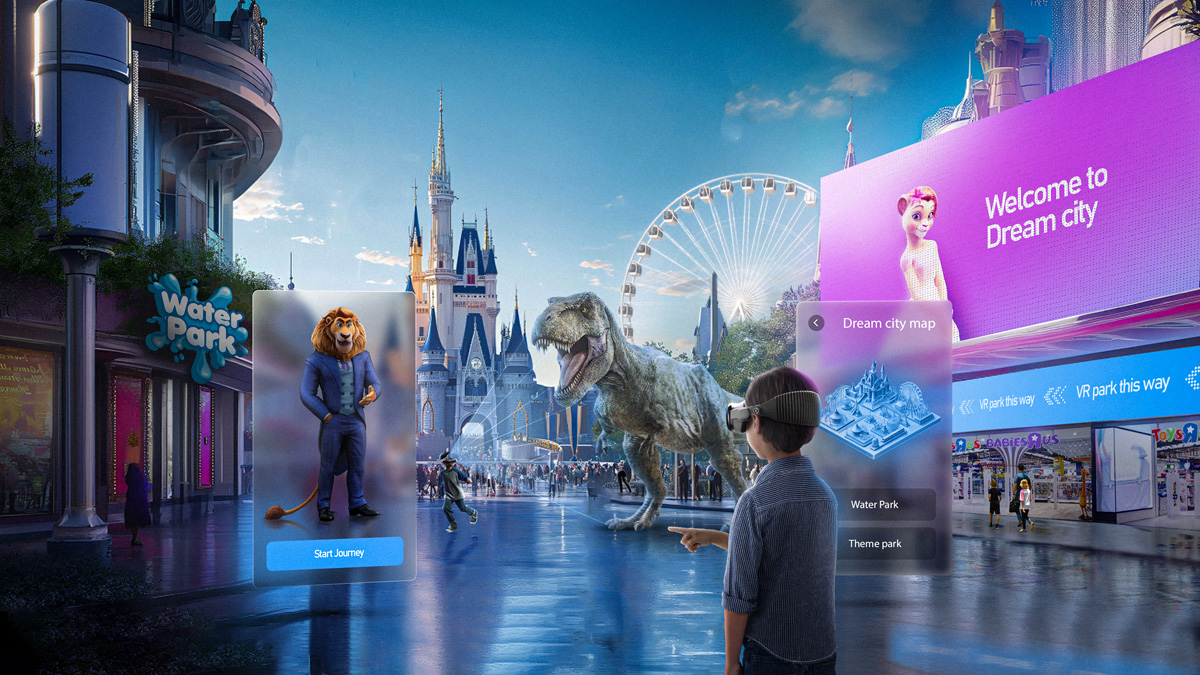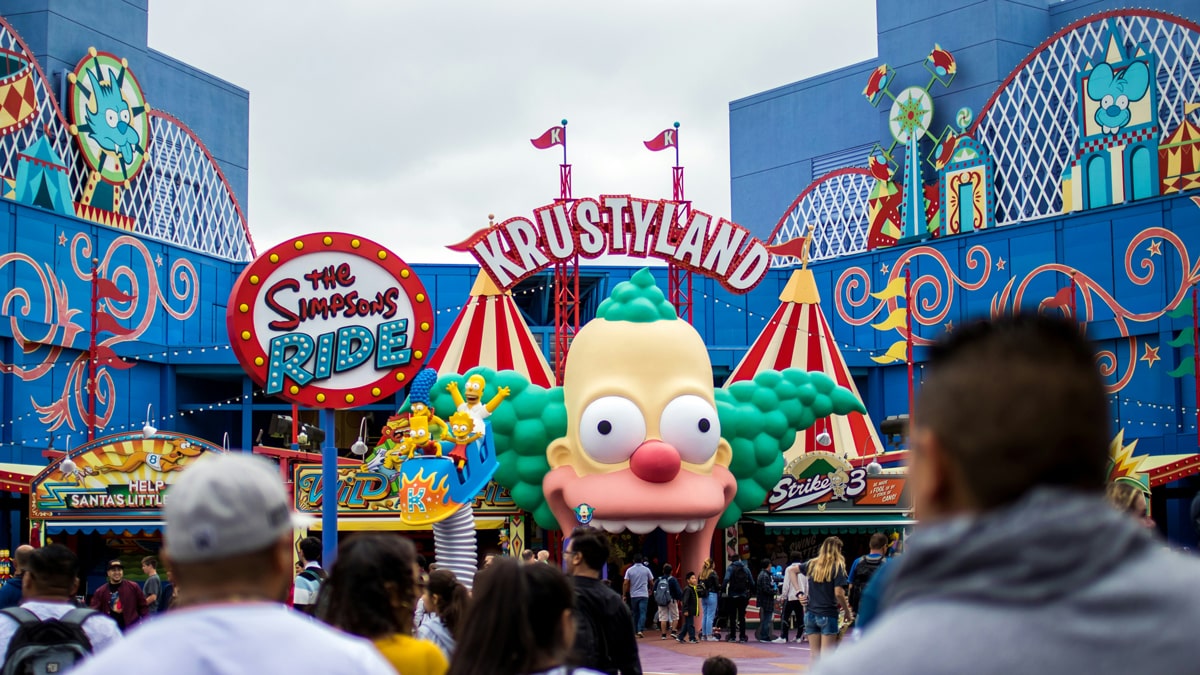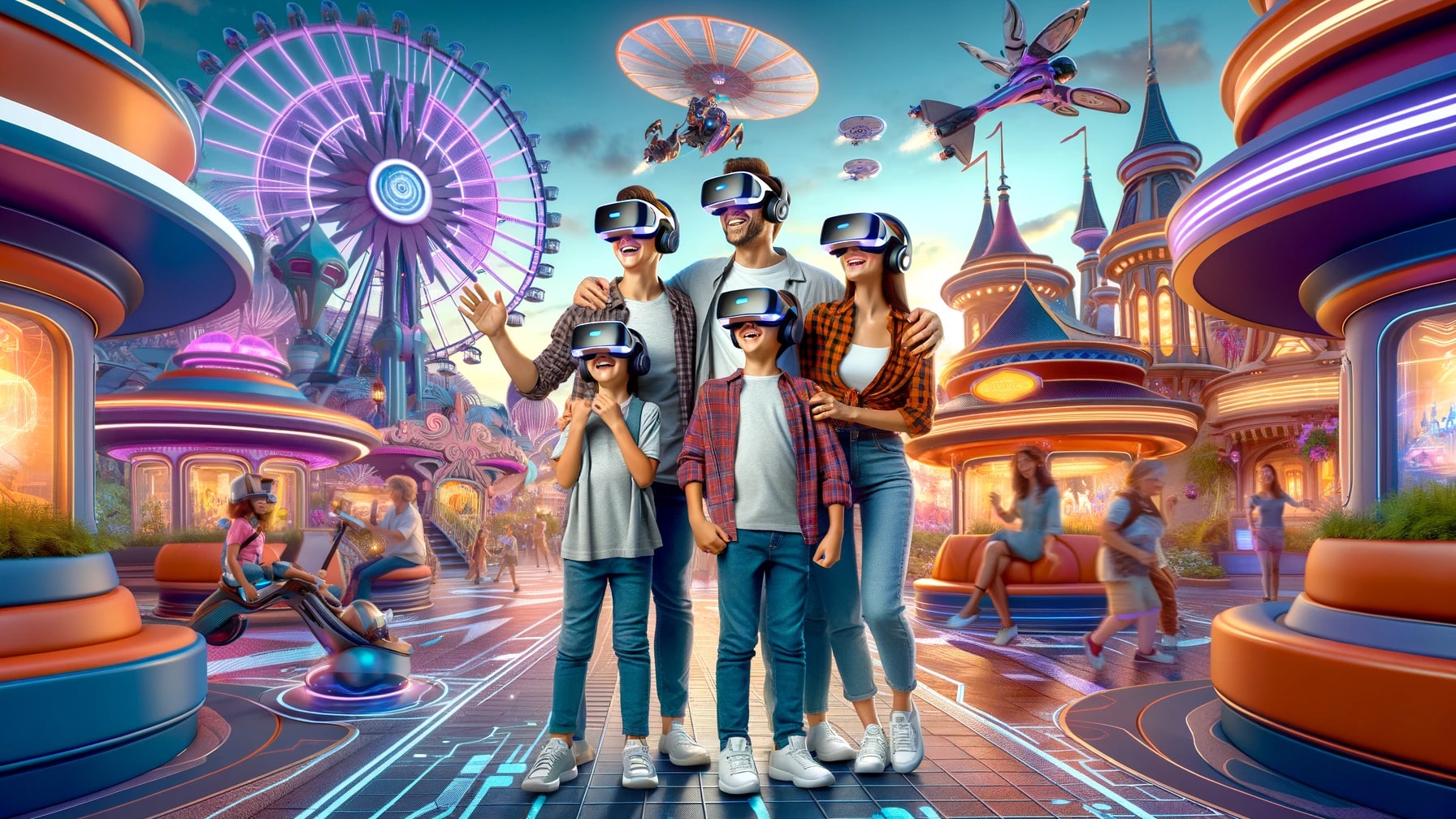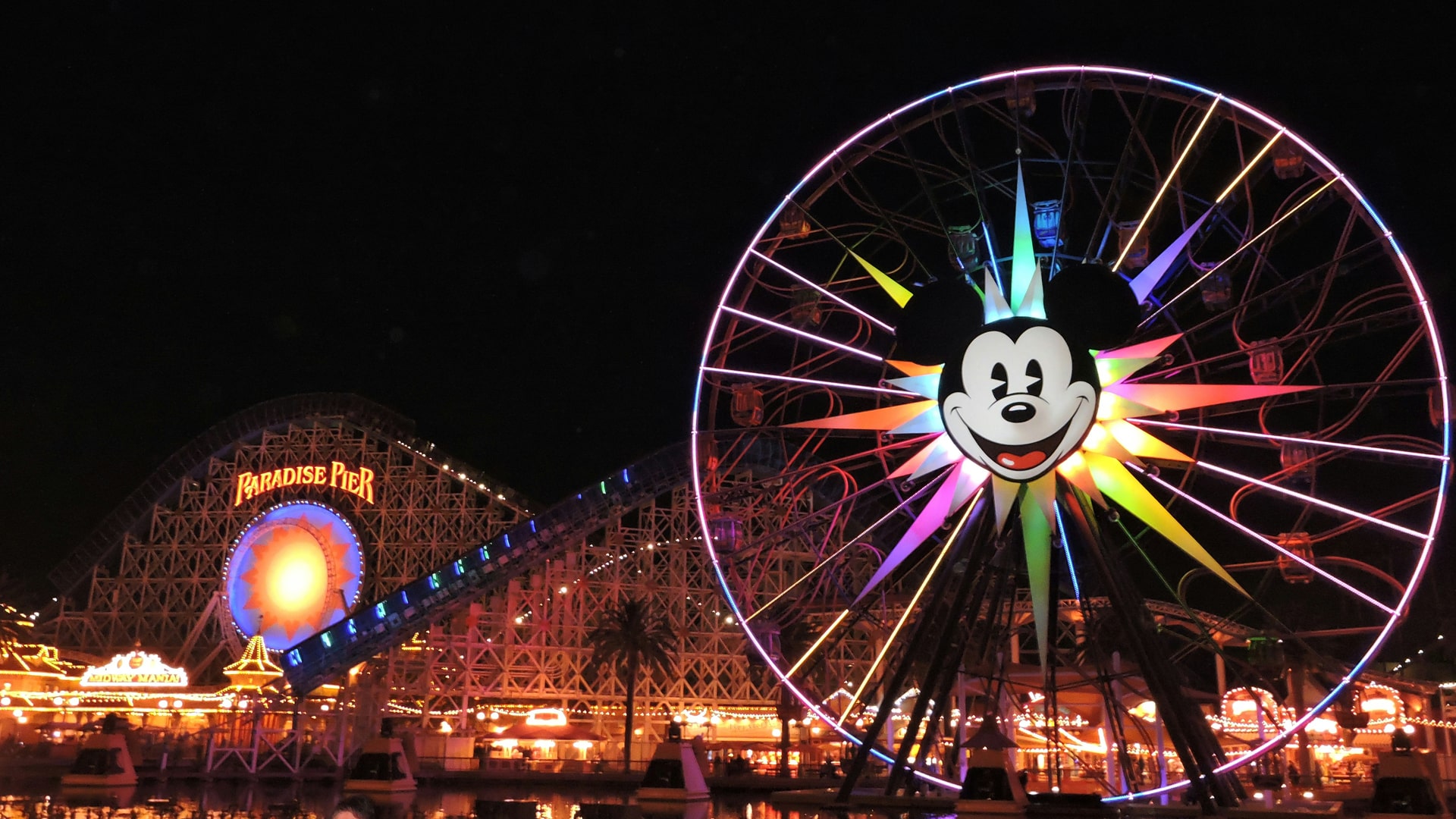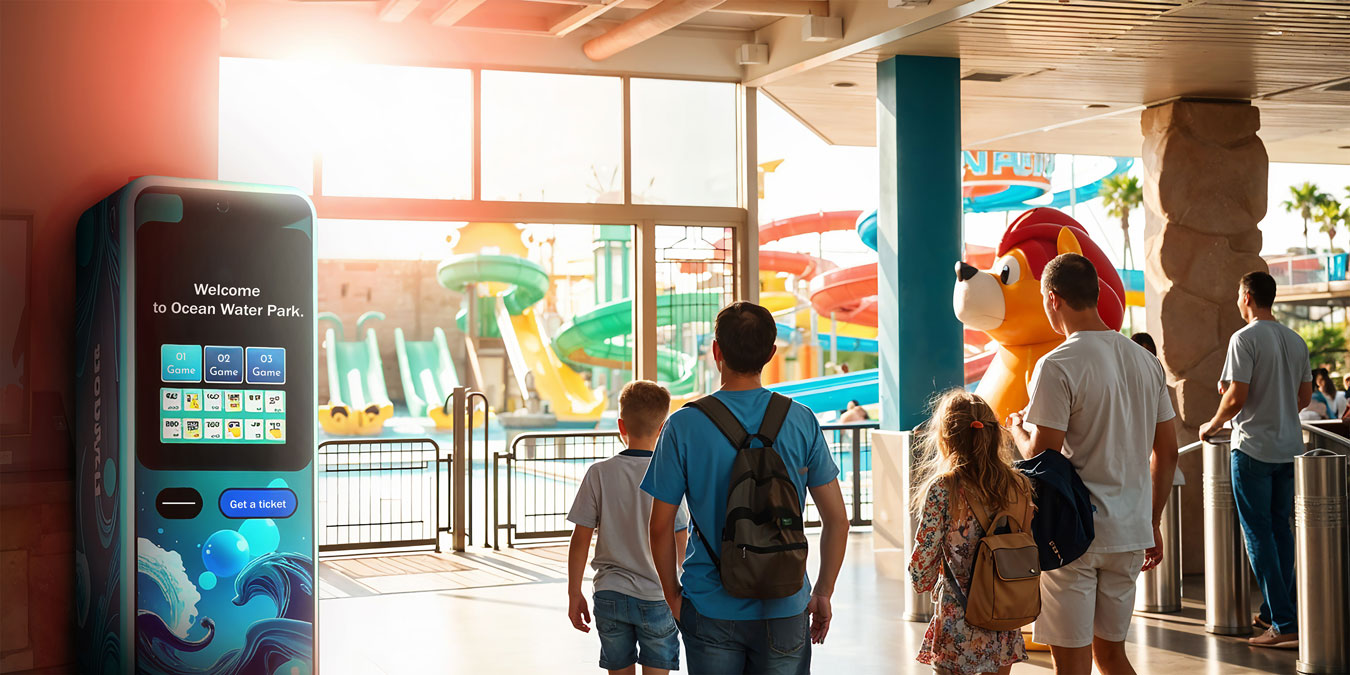
Running a waterpark is about more than just fun slides and splashes. To stand out and attract visitors, you need a strong marketing strategy that creates a lasting impression. In this article, we’ll explore practical and creative ideas to promote your waterpark and build a non-forgettable brand, while keeping visitors coming back for more.
To make it easy to follow, we’ve divided the ideas into two parts:
On-site strategies: Things you can do inside your waterpark to engage and delight visitors.
Off-site strategies: Ways to promote your waterpark and reach new audiences beyond its gates.
Whether you’re looking to add interactive attractions or run social media campaigns, these ideas will help you take your waterpark’s marketing to the next level. Let’s dive in.
10 On-Site Ideas for Marketing and Branding a Waterpark
Let’s examine innovative inside possibilities to kickstart effective marketing and strong branding.
IP, Story, and Character Development
Back in 2021, as we saw new technologies and immersive experiences shaking up the entertainment industry after COVID, we put together a dedicated R&D team to dive deep into the theme park and water park industries.
We didn’t just stop at reviewing the top global parks—we also did a simultaneous research on the MENA and GCC, where advancements were booming, to spot potential opportunities for our clients.
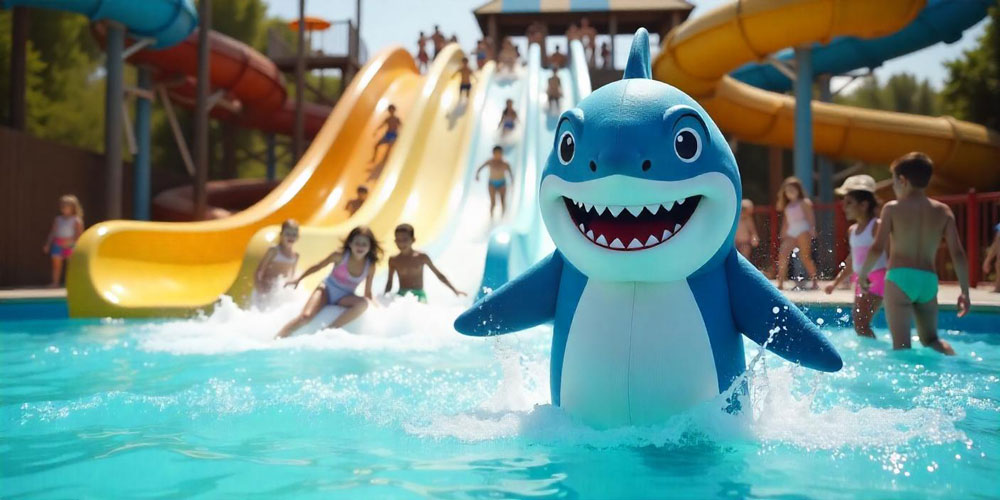
We made it a point to attend key global events like IAAPA, SEA and DEAL, where we picked up priceless insights about what’s happening in the industry and what could happen next. These learnings became the backbone of the solutions we’re now offering.
The realization?
While theme parks are all quickly jumping on new technologies, they’re missing something crucial—consistency and being future-ready.
Key insights gathered from global events highlighted the need for consistent adoption of technology, with an emphasis on strong intellectual property (IP) as a central theme for parks.
An IP-based park creates a unique universe for visitors, integrating characters and storylines into their experiences and interactions. The digital aspect of an IP enhances guest engagement through apps and augmented reality, blurring the line between physical and digital experiences.
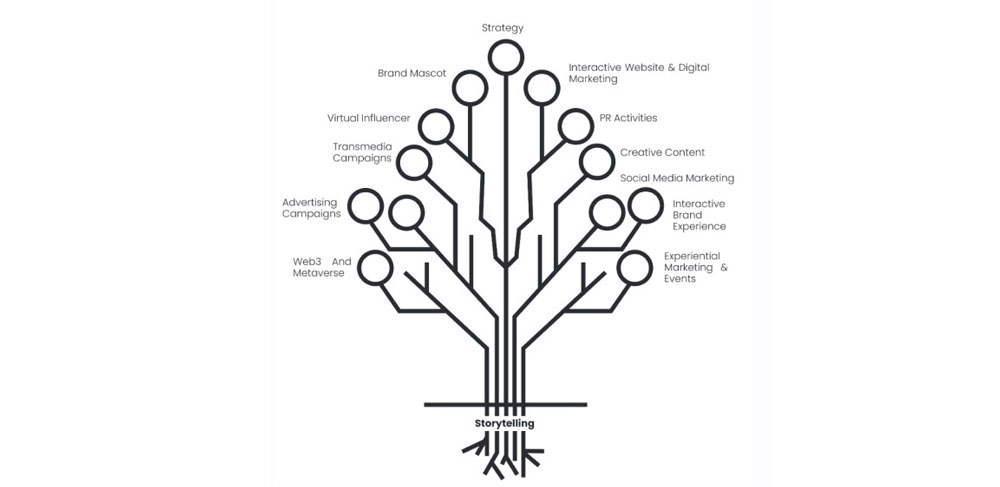
IP can grow and adapt over time, helping maintain audience interest by introducing new characters and storylines. Building a community around the IP fosters connection among fans. Successful examples, such as The Land of Legends theme park, demonstrate the importance of storytelling in marketing efforts.
Waterpark managers are encouraged to develop engaging stories that align with their brand values and use these narratives in their marketing strategies to create cohesive branding and maintain guest interest.
Implementing In-Park Digital Campaigns Using AR and VR
Technology is snowballing. Demonstrating to people that you’re using the latest technological advancements is a great way to capture their attention and turn heads toward your brand.
Therefore, we strongly recommend you set up the infrastructure for XR experiences, such as augmented reality (AR) and virtual reality (VR).
Implementing campaigns that require these devices elevates visitors’ experience.
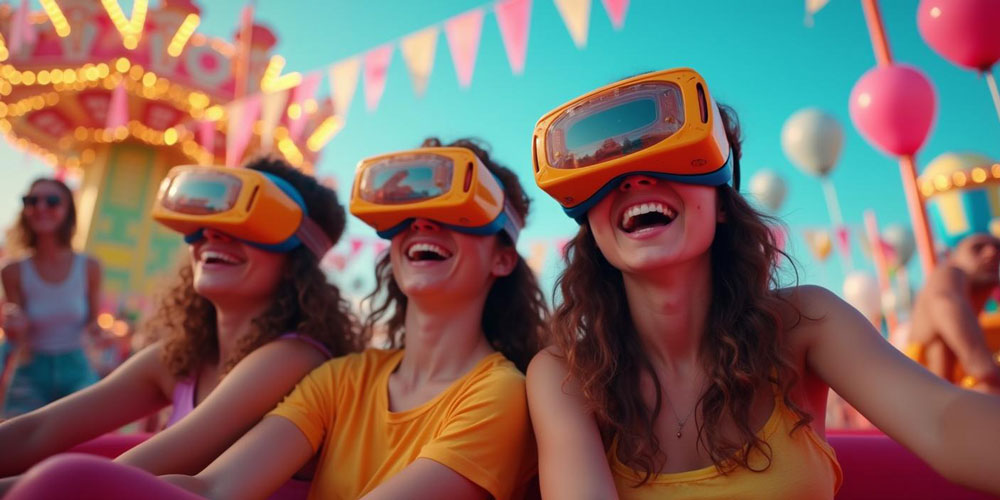
The story you wrote in the first step can be helpful here, too. Visitors can explore your business’s fantasy world with AR-enabled apps and VR devices.
Moreover, with a strategic plan, you can encourage them to visit more park sections and enjoy your brand better.
The primary characteristic of such campaigns is the immersion they create. The immersion that leads to creating indelible moments for visitors makes their experience more delightful.
Read More: Interactive AR/VR Ideas and Examples in Marketing
Although these points seem enough to opt for running such campaigns in the waterpark, there are more benefits to this approach:
- Visitors are likelier to share their AR and VR experience on social media platforms and indirectly promote your brand.
- There will be excellent opportunities to sell merchandise and even special offerings.
Let us reemphasize that utilizing the newest forms of technology is a superb way to make your brand the talk of the town and attract more visitors to the park.
Leveraging Interactive and Creative Capabilities
In addition to all the traditional aquatic activities that we’ve been using in waterparks for decades, consider some interactive features to enhance marketing and branding.
Find out some interactive examples: Interactive Media Trends
For example, people who have fun with such interactive activities are likelier to share their experience on social media platforms, which indirectly serves the waterpark’s marketing goals. Additionally, implementing proper interactive features aligned with your brand’s guidelines allows you to create a distinguished brand image in the target audience’s mind. Later in this blog, we’ll discuss theme-based marketing efforts more deeply.
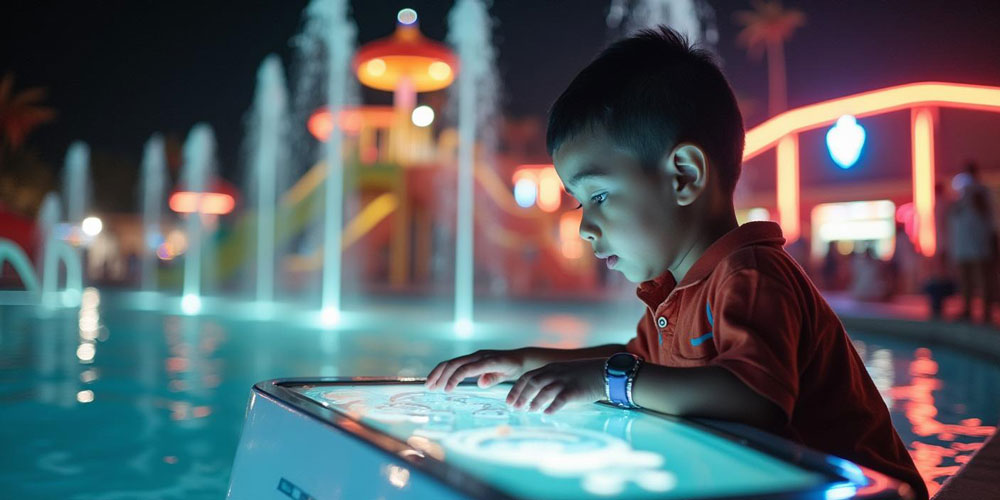
Continuing our discussion on interactive features, you must also know that such activities can appeal to visitors of different ages and groups. Children, teenagers, and adults adore the possibility of participating and impacting their experiences. Simply put, this approach provides your business with an outstanding opportunity to satisfy all visitors from all segmentations.
Let us give you a golden tip: Use the story you made for the brand and mascots in interactive features to form an adhesive brand perception in audiences’ minds.
This way, you’ll not only see an increase in revenue but also improve loyalty toward the brand, increasing customer retention rates.
Investing in Gamification Challenges
Gamification is thriving, and overlooking it can prevent you from accessing a golden opportunity to promote your brand. Combined with water-themed challenges, it goes beyond and takes your business to higher peaks.
Read more: What is Gamification?
In the previous section, we discussed investing in interactive aquatic features. Gamification adds interactivity to every visitor experience. As suggested earlier, if storytelling is the center of the experience, gamification can be included in the story you’re going to narrate for visitors.
Consider ideas like treasure hunts, where guests should participate in particular games to pass levels and reach the needed score to win a prize—an excellent strategy to enhance visitors’ engagement.
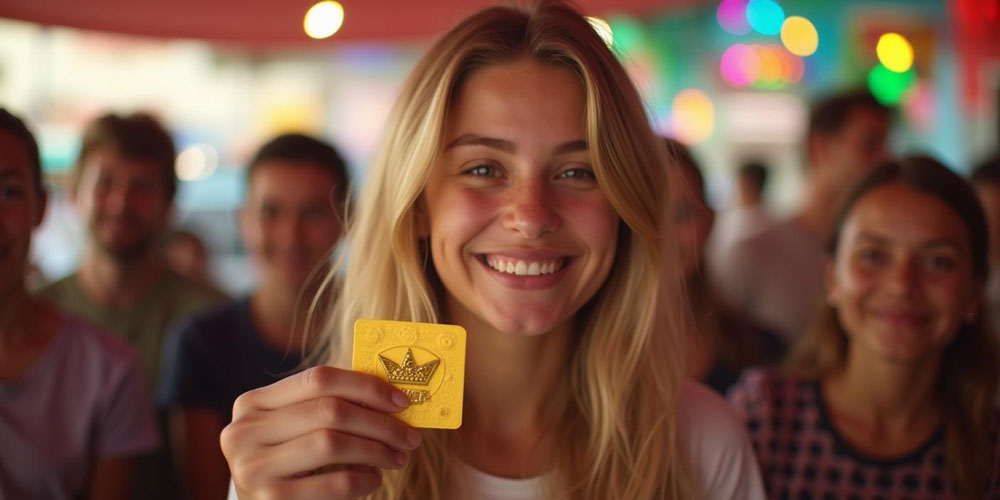
Furthermore, competitive games are helpful in this regard, too. Provide visitors with the opportunity to become rivals in games like surfing, hitting objects with water cannons, contesting on climbing walls that are simultaneously waterfalls, etc. These are all fabulous ideas for incorporating gamification in water-based challenges and attracting visitors to the waterpark.
You can create prizes related to the waterpark’s mascot and help winners better remember their time with your business.
In addition to enhancing visitors’ engagement, increasing social media buzz, and expanding the loyal customer base, unique usage of gamification creates a great chance for getting sponsors and making additional passive income.
Lastly, innovatively using gamification can help you gain an advantage over rivals. A truly astonishing experience can even turn your business into a must-visit spot.
In a nutshell, without gamification, you can’t harvest the full potential of all marketing and branding opportunities, and that would be an absolute miss.
Hosting Watery Events on Special Occasions
As a waterpark marketing manager, you should take advantage of this possibility and plan to host occasional watery events to attract visitors.
Typically, you should plan to host events on warm days. For example, spring breaks are superb opportunities to host special events for students taking a break from education and wanting to have fun with their friends.
Take foam parties as a good instance. There would be beverages, young and energetic students, loud music, and foam all over the place—a perfect combination to capture attention and encourage people to visit your park. Such events help attract new customers and retain those who visit your park regularly.
Think of occasions that are tightly related to your brand. For example, a waterpark in the US often uses the country’s flag in its advertising and can host a special event on Independence Day with a decoration of the heroes of the 4th of July.
Once again, such campaigns can boost the chance of generating buzz on social media platforms and making the brand the topic of the moment.
Last but not least, don’t forget about the revenue boost thanks to hosting these events. It’s predicted that more people will visit the park at these events than on regular days, which translates into more sales of tickets, food, merchandise, etc.
Immersive Experience with Exceptional Storytelling
In the first section of this part, where we explore in-site waterpark marketing ideas, we discussed storytelling as the core measure that should be centered and gathered around.
Now, we want to reemphasize the importance of a good story and examine the immersion waterparks can provide with its help.
Chances are all your rivals offer similar aquatic games to the ones you provide for your visitors. The key to creating a distinction and making your brand stand out is an immersive story that attaches potential customers to the waterpark by all means.
This story emotionally connects visitors to your brand, boosts their engagement, and makes them loyal to your business.
At Dream Farm Agency, we specialize in crafting stories that align perfectly with your brand.
The better the story, the higher the chance of word-of-mouth marketing and turning ordinary visitors into brand ambassadors.
Let us remind you of the crucial role of well-crafted brand mascots in storytelling and other marketing and branding plans. Brand mascots facilitate the process, and proceeding without them seems impossible.
An exceptional story helps you generate additional revenue by selling story-related goods and services.
For example, consider selling pictures of visitors when reaching a certain level in the story to make a memorable moment or a mascot badge as a medal of honor.
Let’s put it this way:
Mixing the story with gamification principles creates an immersive experience that benefits the brand in several ways.
Moreover, as we discussed earlier, leveraging AR and VR campaigns is also a powerful weapon for deepening immersion. The nature of these fresh technologies sends customers to the bottom of the experience as if they are truly living the moment by all their senses.
Also, don’t forget the impact a story can have on your brand’s identity. In simpler terms, good storytelling can create a unique brand identity that separates you from your competitors.
Offering Guidance Through Waterpark’s Official App
There are millions of mobile applications in various app stores, so what’s your reason for not creating one for the waterpark of yours? What’s the point? Let us explain why this is essential.
Smartphones are considered their owners’ assistants in almost everything. Therefore, creating a unique mobile app for your waterpark can serve your marketing and branding objective in many ways.
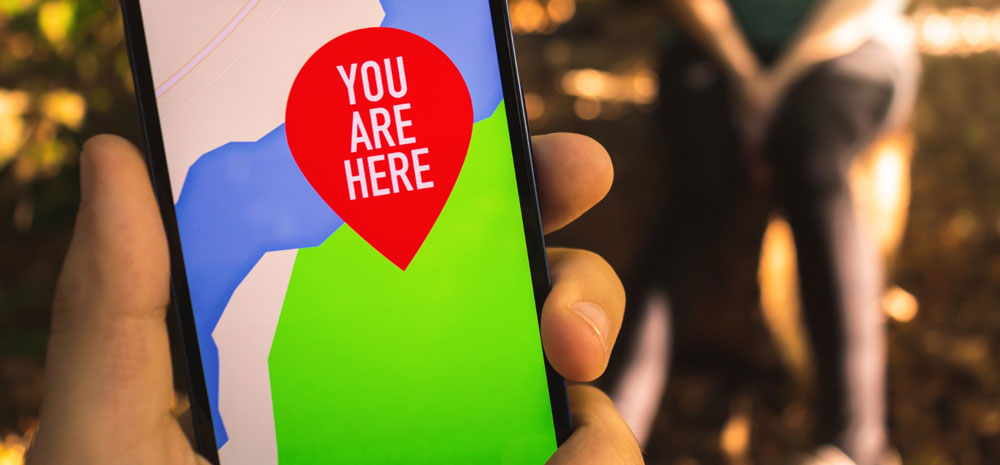
The app can be equipped with features to provide visitors with immersive AR experiences. For example, visitors can point their phone cameras at different games in the waterpark and see the mascot pop up, explaining them and giving guidance on how to participate in contests. This is the definition of immersion, which we examined earlier in this blog.
A well-designed app can offer a personalized experience, fostering a closer relationship between visitors and the brand. Visitors can buy game tickets through the app and get notified when their turn comes on. They can also use a real-time map to navigate and quickly find their desired sections.
Investing in custom app development enables waterparks to engage visitors more efficiently with the story they made. Usually, such apps are more useful when used in the park. However, you can go beyond and let users stay in touch with mini-games and features, even when they are miles away from the actual location. This encourages users to visit the waterpark more often.
Official apps can also serve as announcement channels. During special campaigns, you can notify potential customers of upcoming events and periodic discounts to attract park visitors.
Furthermore, utilizing the app for upselling and cross-selling merchandise is feasible. Developing features within the app that allow users to buy your products alongside tickets online is a nice approach to removing any barrier to customers’ access to your business and its offerings.
Remember the app’s ability to collect user data that can be used to enhance future marketing campaigns and branding-related efforts.
In general, creating an official app is obligatory for all big businesses, and waterparks are no exception.
Now that we’ve examined these seven on-site ideas, let’s review some off-site waterpark marketing strategies.
VIP and Loyalty Programs
To enhance the overall experience for our guests, we will introduce exclusive VIP sections throughout the park. These specially designated areas will feature private seating, ensuring a comfortable and premium atmosphere.
Guests will enjoy priority access to popular rides, allowing them to skip long lines and maximize their time enjoying the attractions. In addition, exclusive dining options will be available for VIP guests, featuring curated menus that highlight the best culinary offerings in the park.
To further elevate the VIP experience, we will offer comprehensive VIP packages. These packages will include branded towels for those who wish to relax by the pool or take part in water attractions, as well as secure lockers for storing personal items.
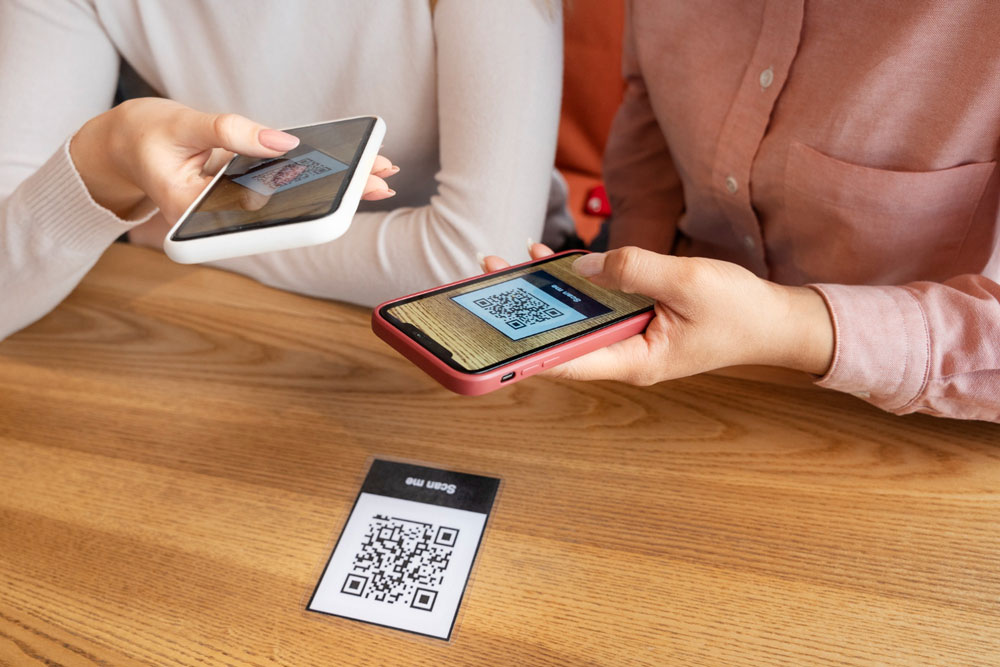
Fast-track passes will be included, granting immediate access to select rides and attractions, allowing guests to experience everything the park has to offer without delay.
Additionally, we will implement a loyalty program designed to reward frequent visitors. By launching a membership or loyalty card system, guests can enjoy a variety of benefits, including discounts on admissions and merchandise, early access to rides and events, and the ability to accumulate points with each visit.
These points can later be redeemed for park merchandise or food, adding value to their overall experience and encouraging repeat visits.
This dual approach of providing a luxurious VIP experience alongside a rewarding loyalty program will not only enhance guest satisfaction but also cultivate a sense of community among our visitors, encouraging them to choose our park as their go-to entertainment destination.
Themed Food and Beverage Items
Consider introducing a delightful array of waterpark-themed beverages, featuring vibrant mocktails and refreshing fruity slushies, all elegantly served in specially branded cups that evoke the excitement of a day at the park.
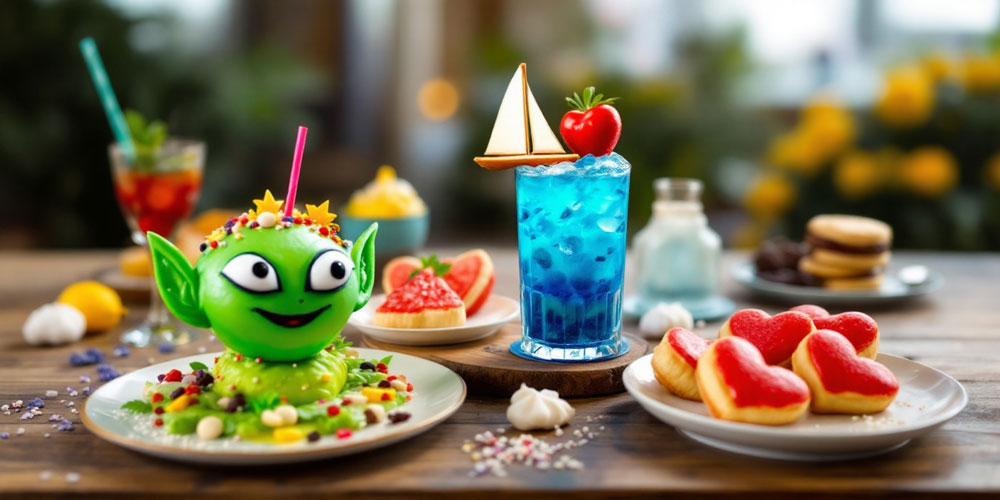
Additionally, craft a menu of delectable food items that perfectly capture the essence of the water and beach atmosphere. Imagine “beachy” fries, lightly battered and golden, reminiscent of sun-kissed sands, or “surfboard” pizzas, artfully shaped and topped with an assortment of colorful, fresh ingredients that invite guests to savor the flavors of summer.
Sponsorships and Collaborations
To enhance the overall guest experience and drive more traffic to your waterpark, consider forging strong partnerships with nearby hotels, restaurants, and attractions.
This could involve developing package deals that combine admission to the waterpark with discounted stays at local hotels, offers for meals at partner restaurants, or discounts for nearby attractions when they show their waterpark tickets.
Such collaborations not only increase the visibility of both the waterpark and its partners but also provide a seamless and enjoyable experience for visitors, encouraging longer stays in the area.
Additionally, to amplify this partnership, place co-branded signage in strategic locations within partner establishments.
This can include promotional materials at hotel lobbies, restaurant menus, or informational brochures in visitor centers. This visibility creates a sense of community support and encourages guests to consider the waterpark as a fun and convenient option during their visit.
In the competitive landscape of family entertainment, aligning your waterpark with well-known brands can significantly enhance its appeal.
Seek out brands that resonate with your target audience, such as popular sports brands, ice cream makers, or even local food artisans, to create temporary in-park activations. These activations could take various forms, like branded pop-up shops, special events, character meet-and-greets, or themed attractions that reflect the essence of the partner brand.
Read more: Co-Branding Examples
For example, collaborating with a sports brand might involve setting up a mini sports arena within the park where guests can participate in fun, interactive challenges or games. An ice cream company could host a special ice cream flavor creation day, allowing guests to customize their treats at a pop-up stand.
These co-branded experiences not only attract guests who are fans of the collaborating brands but also enhance the overall value and experience your waterpark offers. Promotional materials, such as social media campaigns and in-park signage, should emphasize these collaborations, highlighting unique offerings and experiences that guests can’t find elsewhere. This strategy can help create buzz and drive greater foot traffic to your waterpark throughout the partnership duration.
10 Off-Site Ideas for Marketing and Branding a Waterpark
As you read in the previous section, there are several approaches you can take to promote a waterpark from within the environment. But what about those who are absent from the park? What about those people you want to capture their attention toward your business and motivate them to visit the park at least once?
Here, we’ll delve into ideas beneficial for marketing and branding a waterpark outside its environment.
1. Influencers Marketing
There are multiple strategies that you can use for influencer marketing.
You can use simple strategies like direct influencer advertisements for the water park or inviting influencers to visit the park and share content about their experience.
Keep in mind that sending the same content to all influencers and asking them to post it isn’t effective. Instead, it’s better to create a customized scenario for each influencer and allow them to promote the water park in their own style. People are tired of seeing generic ads and only pay attention to content that feels authentic and based on real experiences. That’s why the second approach is more appealing.
The second approach is to invite influencers to use the water park services like regular customers and post content they record during their visit.
The ideal scenario is to find niche influencers, such as those specializing in leisure and entertainment venues or travel and tourism influencers whose audience has the potential to become your customers.
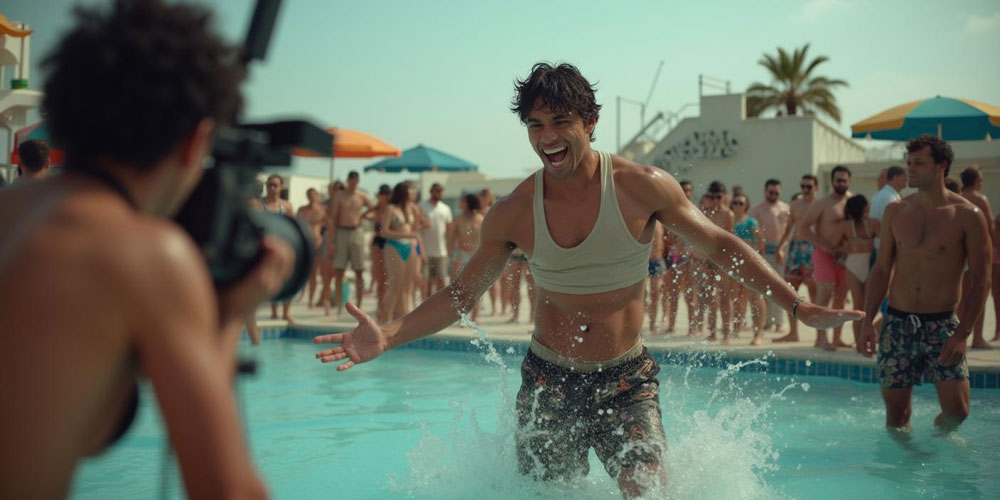
The more authentic the promotional content appears, the more impactful it will be.
Here are a few key tips to keep in mind for influencer marketing:
- Start with a low-cost test campaign with influencers before launching the main campaign to avoid wasting money on unforeseen mistakes.
- Prepare tailored scenarios for influencers to base their content on. It’s a good idea to seek help from professional scriptwriters for this step.
- Run campaigns with clear plans and goals. Combining campaigns with events or focusing on lead generation can significantly boost the impact of influencer marketing.
- Closely monitor and manage advertising expenses. Influencer marketing can be costly, and if you don’t measure the results, you won’t understand why the goals weren’t achieved.
We strongly suggest you seek help from professional agencies to find the right influencers and consult them to create the best content according to each influencer’s properties.
In a broader picture, partnering with influencers can help the waterpark marketing managers in several ways:
- Building trust and credibility
- Generating a buzz on social media platforms
- Increase brand awareness
There is a third way! You can turn your brand mascot into a virtual influencer and use it on social media or in promotional content. We have a service for designing and implementing this modern marketing tool, which you can learn more about on this page.
2. Invest in Targeted Advertising
Targeted advertising has a simple definition:
Show or send marketing messages to those whom you precisely define as ideal target audiences.
Using data and insight gathered through various digital marketing campaigns, you can identify those more likely to become paying customers and attract them by sending personalized messages through their preferred channels.
Additionally, you can use this strategy to retarget interested visitors who came to the waterpark earlier and inspire them to pay you a visit one more time to experience other offerings.
There are many ways to run targeted advertisements, but by analyzing trends and choosing effective methods for businesses, we can create a list of targeted advertising strategies that can benefit any business.
Here, we’ll introduce each of these methods:
Advertising on CTV
TV advertising used to be an expensive option, but thanks to internet-connected TVs, it has now become accessible for most businesses, even those with small marketing budgets.
Read more: What is Connected TV?
Alongside these internet TVs, platforms have emerged that allow anyone to place their ads in the middle of popular series or while viewers are enjoying their favorite movies.
Here’s how it works: by signing up on these platforms, you can create your own ad campaign and showcase the content you’ve produced on internet-connected TVs.
The exciting part is that CTV advertising platforms offer advanced tools for audience targeting. You can specify which city, age group, and interests your ads should be shown to.
Water parks can leverage this highly effective and widely viewed marketing channel to promote their services and boost brand awareness. For example, you can adjust targeting filters to focus on parents with young children or segments of teenagers and young adults who are more likely to be interested in visiting water parks.
Search Engine Marketing
Links marked with terms like “Ads” are the result of Search Engine Marketing (SEM). This is one of the most effective digital marketing methods because users see ads for exactly what they’re searching for.
For example, a user looking for “the best activities in town” might see an ad for the nearest water park displayed above the organic search results.
Using these ads is crucial because Google’s default behavior is to show users organic results. If you fail to rank on the first page in the SEO competition, you’ll miss out on thousands or even millions of potential visitors who might be searching for your water park.
While the competition for Google search rankings is tough, targeted advertising through Google Ads is a cost-effective and efficient way for businesses like water parks to reach their audience.
For instance, you can set up your campaign with filters like:
- Targeting users searching for terms like “Los Angeles water park,” “fun activities in Los Angeles,” or “kids pool Los Angeles.”
- Limiting ads to users located in California.
The better you optimize your ads, the more efficiently you can manage costs, resulting in more customers at a lower expense.
Social Media
Targeted advertising on social media is also a great option for water parks.
Platforms like Facebook, Instagram, TikTok, and X (formerly Twitter) have the largest user bases worldwide. Fortunately, all these platforms offer tools for running targeted ads.
Each social media platform provides filters to improve ad targeting and reach the right audience.
While there are many advertising channels available, using all of them can be expensive. However, most businesses try each marketing channel at least once in a well-planned way. If the results are good, they continue using it; if not, they move on to other options.
Every business needs to identify the best marketing channels based on its own circumstances and goals. There’s no universal rule or method that works for everyone.
Video Advertising
Video advertising comes in various forms, but the concept is essentially the same. In this type of advertising, video content is automatically played on websites or within apps, and viewers watch the ad.
You’ve probably seen this kind of ad on news websites. While they might seem a bit annoying at times, it’s important to note that when executed properly and with the right targeting, this advertising method can be very effective. It can help increase brand awareness and even attract new customers.
If you use engaging videos, such as CGI videos, it will likely attract more attention.
Like other methods, video advertising platforms also offer plenty of filters and tools to optimize and target your campaigns effectively.
In-App Advertising
In-app advertising refers to the ads that appear while playing a game, using a free app, or listening to a podcast. These ads can take the form of banners, text, or videos.
This method can be highly beneficial for water parks because it offers a unique opportunity for precise targeting. You can choose exactly which apps or games your ad will appear in.
Simply select tourism, entertainment, review apps, or popular games as the platforms to display your ads.
Viewing these ads is similar to YouTube ads, where users are required to watch a short segment—usually 5 to 10 seconds—or, in some cases, the entire video. This can be a valuable opportunity to introduce your water park in a 30-second ad, creating an exciting image in the viewer’s mind and encouraging them to plan a visit during their next holiday.
Taking this approaches lets you target specific groups of customers, leading to an increase in conversion and ROI rates—two crucial metrics we mentioned earlier in this section of the blog.
The most challenging part of the whole process is analyzing collected data and determining the best segmentations to invest in, which can be done with outside help from specialists with prior experience in such fields.
3. Register the Waterpark in Directories and Review Platforms
To increase your brand’s visibility, you can create a profile of your waterpark in specialized directories and review platforms dedicated to assessing entertainment centers.
Take The World Waterpark Association as an example of a great platform in this field.
People use these platforms to gather information about the waterparks they aim to visit. As a result, presence on such websites gives your business a fantastic opportunity to be seen by the right target audience.
In addition to the World Waterpark Association, which is a specialized platform, consider creating profiles on more generic platforms like Google My Business, TripAdvisor, Yelp, etc., to access more probable customers.
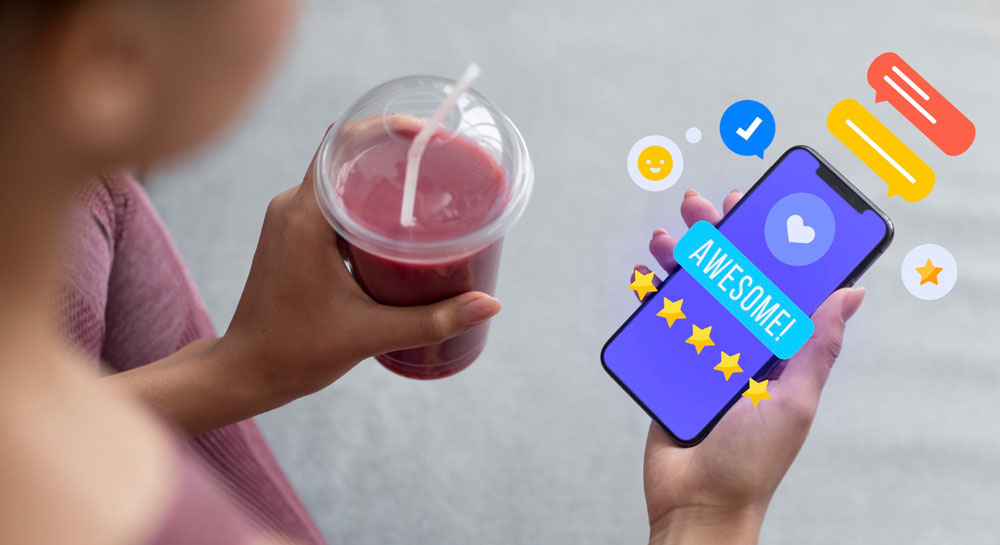
Opting for this approach will not only increase the brand’s visibility directly but also improve local SEO, which we’ll examine further in this blog.
If you succeed in creating a memorable, delightful experience for your customers, they’ll write positive reviews about your business on these platforms. This way, more visitors will come to the park, hoping to spend quality time with their family and friends. However, there is a dark side to this scenario.
Failing to provide high-quality services and experience leads to negative reviews and comments, harming your brand. Since you cannot control these outsider platforms, you can only answer unsatisfied visitors and address their troubles patiently. If you can’t gain their trust, you’ll lose more and more potential customers who encounter those bad reviews and low ratings.
In general, review platforms are double-edged knives that can harm and benefit your business at the same time. See them as a chance to directly engage with customers online and answer their concerns and criticisms.
4. Host Contests and Giveaways on Social Media Accounts
For different purposes, you can also host contests on the waterpark’s social media accounts and generously reward winners.
Giveaways with notable prizes can be beneficial in terms of:
- Boosting visibility
- Enhancing engagement
- Improving brand recognition
- Raising brand awareness
Whether you aim to reach new customers, retain existing visitors, or add more regular ones to the loyal customer group, online contests are proven to be practical tools for waterpark marketing strategies.
Contests with good advertising bring tons of people into your account, and there will be a golden opportunity you must seize. You have the chance to showcase your park’s attractions, send them to the waterpark’s official website for various purposes, persuade them to buy tickets with discounts, and more.
Again, you can count on an increase in word-of-mouth marketing because, if implemented correctly, the contest is expected to attract attention to your brand. If you offer valuable rewards to winners, they will likely inform their friends about your brand.
Please note that the proper execution of such campaigns depends on handling some minor details. That’s why we recommend you delegate the job to expert agencies to ensure everything runs flawlessly and meets marketing objectives.
5. CGI and VFX Videos
CGI and VFX videos have become a trending phenomenon on social media. Brands are quickly jumping on this trend, using these highly shareable videos to achieve their marketing goals.
Theme parks and various other tourism and entertainment centers often grab attention during special occasions by creating CGI videos. Thanks to social media algorithms, these videos introduce countless people to these businesses and their services.
At Dream Farm Agency, one of our specialties is producing CGI videos. We handle the entire process, from ideation to final production, ensuring top-quality results for your brand.
Read more about CGI video Creation.
6. Build an Interactive Website for the Waterpark
Earlier in this blog, we discussed the crucial role of interactivity in today’s world. Based on this fact, creating an interactive website seems mandatory, and it is.
An interactive website is essentially like any other website, but it incorporates interactive elements and features into its design.
For example, an interactive website for a water park could include a 3D map of the park and a virtual tour. By checking out the examples provided in this article, you can discover more ideas for creating a unique and engaging website.
A well-designed interactive website can show visitors the park’s fun nature and give them a glimpse of what they’ll experience in the waterpark.
If you’re looking for solutions to enhance user experience and streamline ticket sales, investing in the creation of such websites is the answer to your problems.
Put yourself in potential customers’ shoes and see the world with their eyes. Assume you enter the waterpark’s website, which is, of course, interactive and visually appealing. It’s easy to find anything you seek. You’ll no doubt be satisfied, and that’s the increase in UX we’ve mentioned a few lines above.
Incorporating an intelligent system for selling tickets and reservations would also go a long way toward making visitors happier.
It’s recommended that the website use high-resolution pictures and videos of the park’s attractions without damaging its functionality.
Also, it’s best to use previously collected data and personalize each individual’s experience as much as possible. Naturally, people will be more interested in encountering offers tailored to them and their preferences, and they’re more likely to turn into paying customers at the end of the day. You’ll also be able to collect more data for better-enhancing personalization.
Moreover, since a good website is the core ingredient for any other digital marketing effort, an interactive website will set the foundation for upcoming campaigns, from SEO to PPC advertising.
So, while many see interactive websites as unnecessary investments, we assure you that they’re more than online brochures and can act as powerful weapons for waterpark marketing.
If you ask how to make an interactive website, we should tell you that it takes time and requires some specific specialties. Therefore, it’s better to outsource the job to agencies and professionals who know how to do it.
7. Reward UGC Content & Encourage Visitors to Write Reviews on Various Platforms
Motivate visitors to generate and share content about your business on their social media. This phenomenon, known as UGC (User-Generated Content), offers numerous advantages for your brand brand.
However, most of the time, visitors need a slight push from you to do this. Telling them to give us a star on TripAdvisor, write a comment on Google Maps, or set rewards for the best content can do the job and provide the fuel to start such campaigns.
People trust other comments and reviews. Hence, people won’t feel like they’re bombarded with advertising content, which makes it more impactful and can create brand authenticity. It can also act as social proof to demonstrate that people love your waterpark and enjoy being there.
In addition, successfully encouraging visitors to post UGC on their accounts can help you expand your reach and attract more potential customers to the business.
The great point about UGC campaigns is that they’re super cost-effective compared to many other marketing approaches. You’ll start the trend and stand back. People take the wheel and ride on the wave you created, promoting your waterpark. At the end, you enter and reward winners.
In the last section, we discussed review platforms and their capability for promoting your brand. As mentioned earlier, the more approving reviews you have, the higher your chance of attracting more customers and increasing brand awareness positively.
As a result, we suggest you encourage visitors to spend time on these review platforms and share their experiences. It’s time-consuming, and most will probably reject your request. Once again, offering is the key to getting them to take the desired action (writing reviews on review platforms).
In essence, UGC campaigns and user reviews on specific platforms created for this purpose work together to increase brand awareness, improve sales numbers, build trust and authenticity around the brand, etc.
8. Make the Brand Mascot Visible to the Target Audience
If your water park has a brand mascot, it’s a powerful marketing tool for storytelling, capturing attention, and creating a sense of belonging.
Learn more about brand mascots.
A brand mascot can be featured in promotional videos, social media content, your website, smart displays inside the water park, billboards, city banners, and any other marketing or advertising medium.
Mascots offer significant benefits for branding and marketing. These characters can help keep your brand top of mind and prevent it from fading from your audience’s memory.
Therefore, you must plan to make them visible to your target audiences so that the brand can benefit from their existence.
Proper placement of the brand mascot leads to:
- An increase in brand recognition
- Creation of a memorable identity
- Enhancement in social media engagement parameters
- Positive impact on merchandise sales
Making the interactive version of the mascot lets you use it in various channels and content creation processes, engaging the target audience while fostering a cohesive brand image.
If everything goes as planned, the mascot will become the primary icon of your brand and can be used in advertising, too. As a result, creating memorable ads becomes attainable.
The most important thing is that a well-crafted mascot allows you to form a deep emotional connection with your business’s target audiences —a truly magnificent achievement.
Let us remind you of the importance of creating a really good mascot. Not necessarily any mascot can help you reach further milestones. Strategic decisions should be made to create a perfect one that can serve your brand in numerous ways.
9. Care and Act for Local SEO
Local SEO makes your park visible to nearby potential customers. For instance, if a user searches for “near attractions,” Google will show them nearby water parks on a map or with any other type of local attraction results.
An excellent local SEO strategy increases your website traffic and the chance to turn more website visitors into customers who actually pay to buy tickets.
Although taking the required actions to optimize your website may be challenging, the benefits have proven to be worthy, justifying outsourcing the process to experts who know how to do this job best.
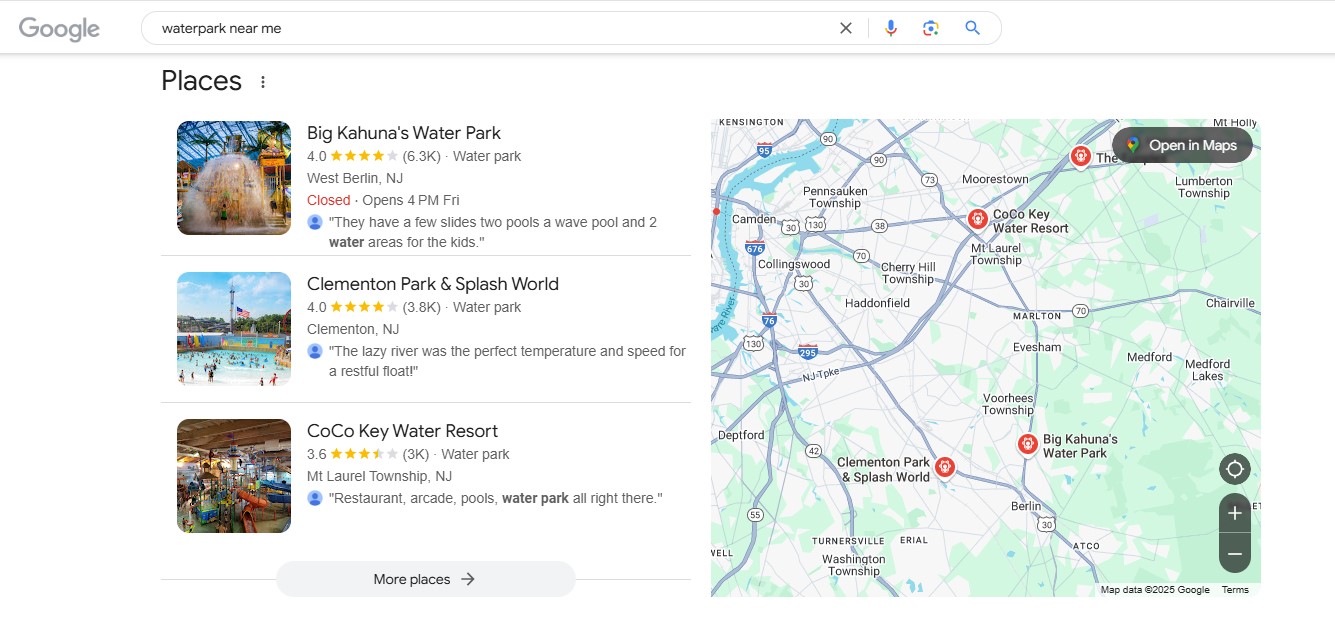
First, good local SEO results in placing at the top of SERPs for searchers near your location. Imagine someone two blocks away searches the term “nearest waterpark,” and your park comes up as the first result on the SERP. As said earlier, since you’ll increase both website traffic and visitors, caring for local SEO is like shooting two aims with one arrow.
Earlier, we discussed the effectiveness of creating business profiles on different platforms and review websites. All those suggested approaches will ultimately lead to better local SEO.
10. Retention Marketing
Retention marketing for waterparks focuses on keeping existing customers engaged and encouraging them to return.
One effective way to do this is by creating membership programs or loyalty cards. These programs reward visitors with discounts, free entry passes, or exclusive perks like early access to new attractions.
For example, you can offer a “frequent swimmer” card that gives a free visit after a certain number of paid entries. This keeps guests coming back while feeling appreciated for their loyalty.
Another strategy is personalized communication. Use customer data from online ticket purchases or app sign-ups to send tailored emails or messages.
For instance, you could send birthday discounts, reminders about upcoming events, or updates on seasonal promotions. Highlight special offers for families, groups, or kids, as these are common target audiences for waterparks. Personalized communication makes customers feel valued and encourages them to plan their next visit.
Lastly, enhance the visitor experience with follow-ups and feedback collection. After their visit, send a quick survey asking about their experience and offer a small incentive, like a 10% discount on their next visit, for completing it.
Use their feedback to improve your services, such as cleaner facilities or more food options. Additionally, share customer stories or photos (with permission) on social media to create a sense of community and inspire others to visit again. A positive and memorable experience ensures customers not only return but also recommend your waterpark to others.
Need Help to Implement These Ideas?
In total, we have examined 20 solutions that can aid the waterpark marketing team in accomplishing their objectives.
All these approaches are proven to be worthwhile and show their effectiveness in similar projects.
However, it’s normal if you lack the time and resources to implement even some of them. So what can you do? Should you leave these brilliant thoughts behind and stick to traditional plans that never work? Well, no. We’re here to do the job for you, and we assure you we’ll do it in the best way possible.
Our professionals, with a record of highly successful similar projects, are ready to step in and rapidly evolve your marketing and branding efforts.
So, why do you hesitate? Read more about our Waterpark Marketing service.
Nikan
